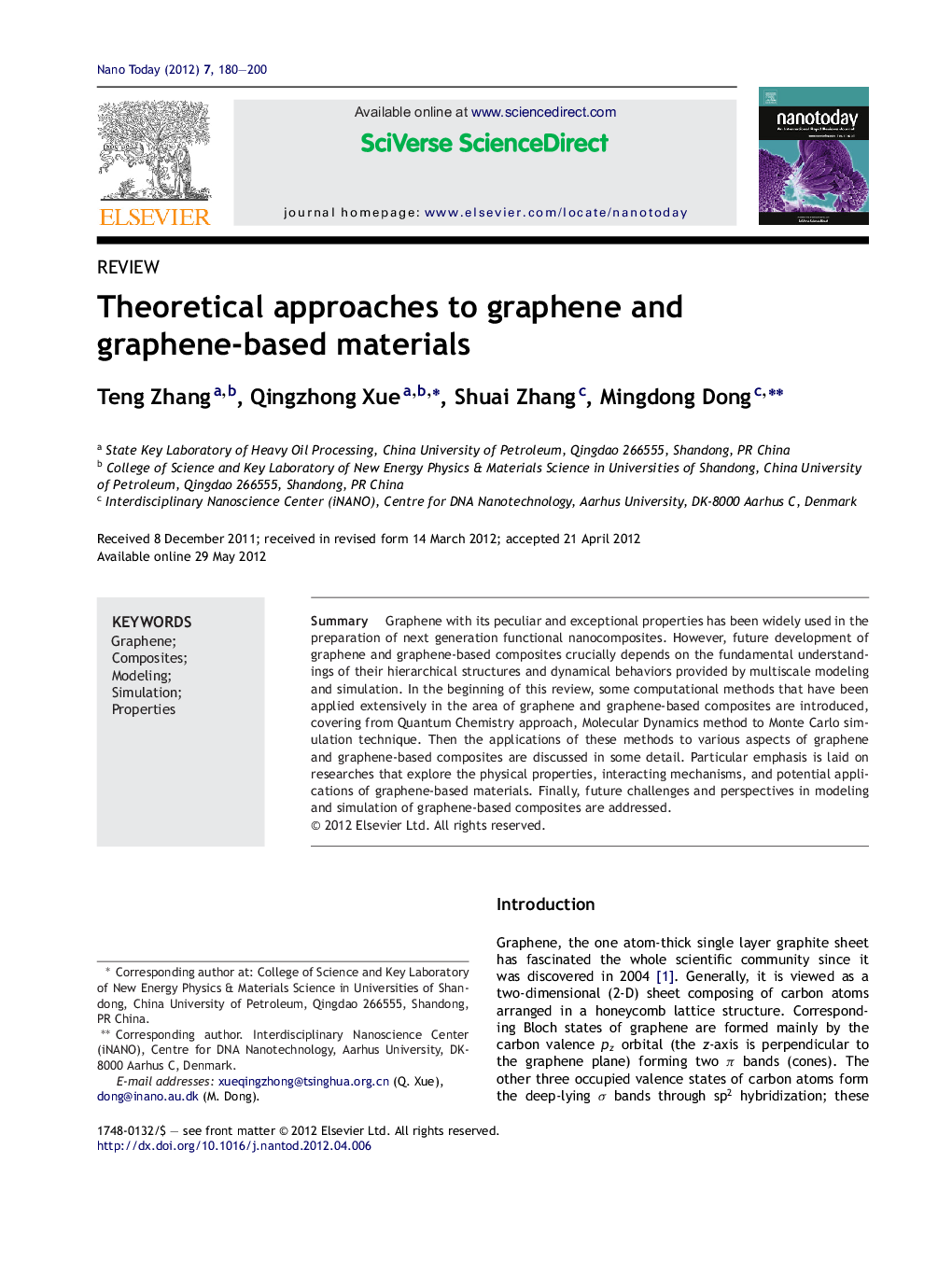| Article ID | Journal | Published Year | Pages | File Type |
|---|---|---|---|---|
| 32453 | Nano Today | 2012 | 21 Pages |
SummaryGraphene with its peculiar and exceptional properties has been widely used in the preparation of next generation functional nanocomposites. However, future development of graphene and graphene-based composites crucially depends on the fundamental understandings of their hierarchical structures and dynamical behaviors provided by multiscale modeling and simulation. In the beginning of this review, some computational methods that have been applied extensively in the area of graphene and graphene-based composites are introduced, covering from Quantum Chemistry approach, Molecular Dynamics method to Monte Carlo simulation technique. Then the applications of these methods to various aspects of graphene and graphene-based composites are discussed in some detail. Particular emphasis is laid on researches that explore the physical properties, interacting mechanisms, and potential applications of graphene-based materials. Finally, future challenges and perspectives in modeling and simulation of graphene-based composites are addressed.
Graphical abstractFigure optionsDownload full-size imageDownload high-quality image (260 K)Download as PowerPoint slideHighlights► Covers interacting mechanisms, physical properties, potential applications of graphene and graphene-based composites. ► CMS helps explain experimental phenomena, analyze interacting processes and provide guidance to experimental research. ► Detailed systematic study on the theoretical studies of graphene-based materials. ► Helpful for the future theoretical investigations and experimental fabrications of graphene-based composites.
